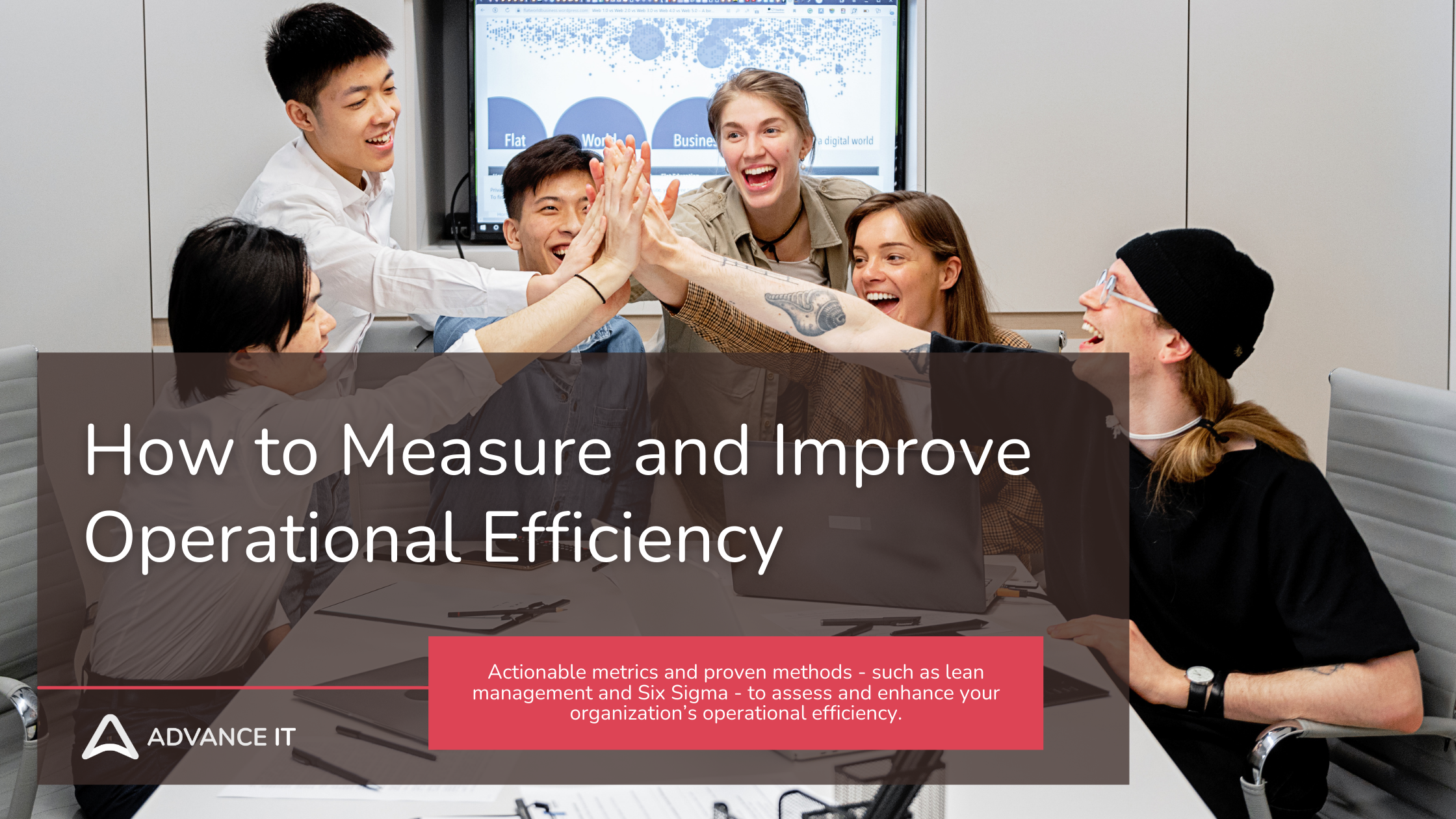How to Measure and Improve Operational Efficiency
How to Measure and Improve Operational Efficiency
Operational efficiency is a cornerstone of business success. It involves maximizing output while minimizing inputs like time, resources, and costs. For admin and operations managers, understanding how to measure and improve operational efficiency is crucial to achieving sustainable growth, reducing waste, and maintaining a competitive edge.
This guide explores actionable metrics and proven methods - such as lean management and Six Sigma - to assess and enhance your organization’s operational efficiency.
What is Operational Efficiency?
Operational efficiency refers to the ratio of output (products, services, or revenue) to input (time, labor, materials, and capital). A highly efficient operation produces maximum results with minimal waste, errors, or delays.
Example:
A manufacturing plant that produces 1,000 units per hour using the same energy and workforce as a competitor producing 800 units is more operationally efficient.
Why Operational Efficiency Matters
1. Cost Savings
Efficiency reduces resource wastage, cutting costs and improving profit margins.
Statistic: According to a study by Deloitte, companies that focus on operational efficiency experience up to 30% cost savings within three years.
2. Improved Customer Satisfaction
Faster and more reliable processes lead to better service delivery and happier customers.
3. Scalability
Efficient operations make it easier to scale without a proportional increase in costs or resources.
Key Metrics to Measure Operational Efficiency
1. Overall Equipment Effectiveness (OEE)
OEE measures how effectively manufacturing equipment is used. It combines three factors: availability, performance, and quality.
Target: An OEE score above 85% is considered world-class.
2. Labor Productivity
This metric evaluates how much output your workforce generates relative to the number of hours worked.
Example: A factory producing 500 units with 50 labor hours has a productivity rate of 10 units/hour.
3. First Pass Yield (FPY)
FPY measures the percentage of products or services completed correctly on the first attempt without rework.
Target: Aim for FPY rates above 90% to minimize waste and rework costs.
4. Cycle Time
Cycle time tracks the total time taken to complete a task, process, or production cycle.
Example: If it takes 10 minutes to assemble a product and the competitor does it in 8 minutes, reducing your cycle time could boost efficiency.
5. Cost of Goods Sold (COGS)
COGS reflects the total cost of producing goods or services, including labor, materials, and overhead.
Objective: Lower COGS while maintaining product quality to improve profit margins.
Strategies to Improve Operational Efficiency
1. Implement Lean Management Principles
Lean management focuses on eliminating waste (time, materials, and effort) to enhance value delivery.
Core Lean Practices:
Value Stream Mapping (VSM): Analyze each step in your process to identify waste.
Kaizen: Foster a culture of continuous improvement with small, incremental changes.
5S System: Organize workspaces with Sort, Set in order, Shine, Standardize, and Sustain principles.
Example: Toyota, a pioneer in lean management, improved efficiency by eliminating non-value-adding activities across its production lines.
2. Adopt the Six Sigma Methodology
Six Sigma focuses on reducing defects and improving process consistency through data-driven decision-making.
DMAIC Framework:
Define: Identify inefficiencies or defects.
Measure: Quantify the current state of the process.
Analyze: Pinpoint root causes of inefficiency.
Improve: Implement targeted solutions.
Control: Monitor results to sustain improvements.
Real-World Example: General Electric saved $12 billion by adopting Six Sigma across its operations, cutting waste and improving processes.
3. Leverage Technology and Automation
Investing in technology can eliminate manual errors, speed up processes, and provide real-time insights.
Tools to Consider:
Enterprise Resource Planning (ERP): Platforms like SAP or Oracle NetSuite integrate data and automate workflows.
Robotic Process Automation (RPA): Automate repetitive tasks such as data entry or invoice processing.
IoT and Predictive Maintenance: Sensors monitor equipment performance, reducing downtime and maintenance costs.
Statistic: A PwC report shows that 65% of companies implementing automation achieve higher operational efficiency within one year.
4. Enhance Workforce Productivity
Efficient operations rely on a motivated and skilled workforce.
Strategies:
Upskill Employees: Invest in training to improve skills aligned with new technologies and processes.
Improve Communication: Use collaboration tools like Slack or Microsoft Teams to streamline information sharing.
Recognize Contributions: Reward employees who identify and implement efficiency-boosting ideas.
5. Monitor Key Performance Indicators (KPIs)
Regularly track and evaluate metrics to identify inefficiencies and implement improvements.
Steps:
Set measurable KPIs aligned with your goals.
Use dashboards to visualize performance in real-time.
Conduct regular reviews and adjust strategies as needed.
Case Study: Improving Efficiency with Lean and Six Sigma
Scenario: A mid-sized manufacturing firm faced high production costs and low yield rates.
Steps Taken:
Implemented Value Stream Mapping to identify bottlenecks in production.
Used the DMAIC Framework to address recurring defects.
Introduced IoT sensors for predictive maintenance, reducing downtime by 25%.
Results:
Productivity increased by 30%.
First Pass Yield improved from 85% to 95%.
Annual savings of $500,000 in operational costs.
Conclusion
Measuring and improving operational efficiency is essential for staying competitive in today’s fast-paced business environment. By tracking metrics such as OEE, FPY, and labor productivity, and adopting proven methodologies like lean management and Six Sigma, businesses can identify inefficiencies and drive sustainable growth.
For admin and operations managers, investing in technology, fostering a culture of continuous improvement, and aligning efforts with measurable KPIs are critical steps toward operational excellence. With the right strategies in place, your organization can enhance efficiency, reduce costs, and achieve long-term success.








